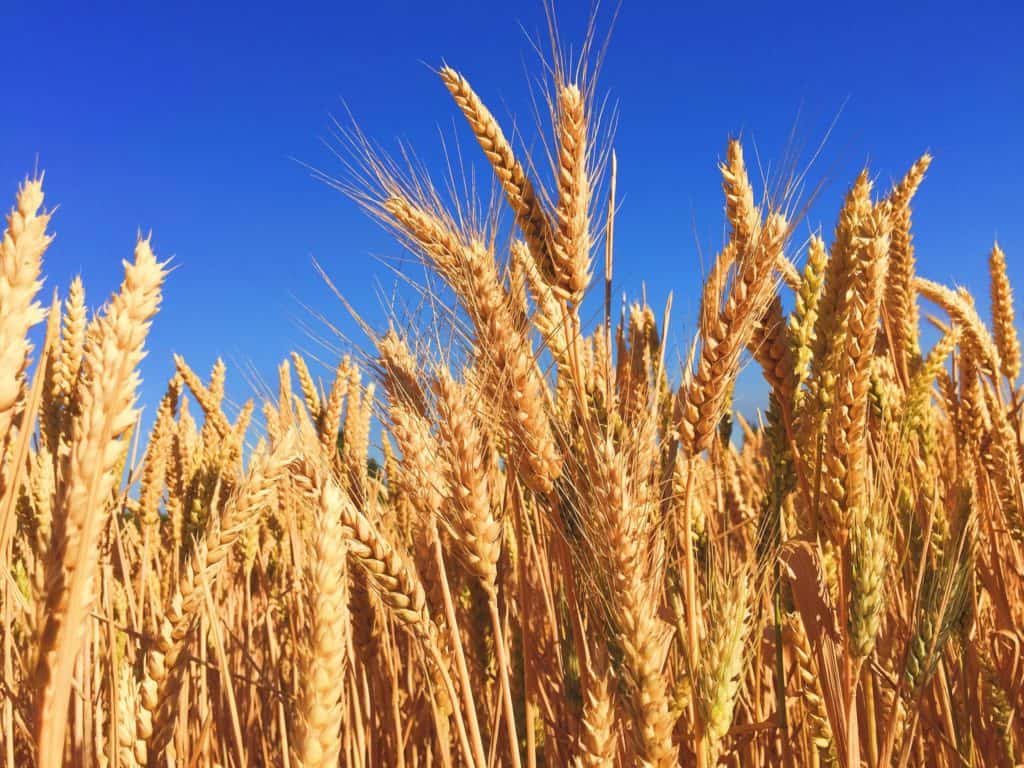
The views expressed here are solely those of the author and do not necessarily represent the views of FreightWaves or its affiliates.
The U.S. agriculture industry has faced numerous headwinds during the COVID-19 pandemic, and with harvests just around the corner, there is a trend developing that could impact the availability of the industry’s desired 20-foot containers.
(Photo: Melissa Askew/Unsplash)
Containership lines’ blank sailings over the past few months sparked a strategy for importers to favor 40-foot containers instead of 20-foot boxes. This was an effort to import as much product as possible given the limited shipping space available. As result, the supply of 20-foot containers has been constrained. Therefore, this has increased the price of 20-foot equipment, making it even less desirable to use. As a result, there is fear of an impending 20-foot container shortage.
“Over the past 90 days we have noticed importers moving to the use of 40-foot equipment versus 20-foot equipment,” explained Alan Baer, CEO of OL-USA. “This has helped manage freight costs and the reduced capacity due to blank sailings.”

Before COVID-19 and the historic blank sailings which followed, OL-USA was moving a mix of three 20-foot containers for every five 40-foot containers. Now the company is moving two 20-foot containers for every five and one-half 40-foot containers.
This trend can be tracked starting at the ports.
Historically, the imbalance of 40-foot containers compared with 20-foot containers is not new to the agriculture industry. Retail imports, which are lighter, higher value, and higher margin, can be fully loaded onto 40-foot and 45-foot containers and the importer can afford to pay higher freight rates.
Agriculture products like soybeans on the other hand, are heavier, of lower value, and have tighter margins. They also require blocking structures to secure the load from shifting during transit. These structures are heavy and add to a load’s overall weight. With weight limits applied to trucks, using a 40-foot container might not make financial sense for the agricultural exporter. It all depends on the shipping rate.

(Photo: Jim Allen/FreightWaves)
“Consider our exports – hay, cotton, soybeans, lumber, meat and frozen chicken – we are unable to pay those high freight rates,” explained Peter Friedmann, executive chairman of the Agriculture Transportation Coalition. “Right now, rates across the Pacific are three times higher for the imports than they are for most agricultural exports, including soybeans. So which direction (imports or exports) do the ocean carriers prefer? Obviously, the imports – they make three times the revenue.”
While the spread of 40-foot containers compared with 20-foot containers has always leaned toward the larger boxes, according to SONAR, that spread has increased with the pandemic – translating into more 40-foot containers leaving the ports by the rails.

“Importers that are more aware of pricing are combining orders into one 40-foot every other week rather than one 20-foot container each week,” explained Robert Castelo, President of Marine Transport. “This cuts out one trucking route and saves on costs. Importers are then paying a $3,000 rate for one container rather than $2,200 for two pieces of equipment. This is why we are moving more 40-foot containers than 20-foot containers.”

(Photo: Jim Allen/FreightWaves)
Marine Transport has 12 terminals in Chicago, Savannah and along the East Coast. About 75% of the containers it is seeing are 40-footers, while 25% are 20-footers.
“We are anticipating an uptick in activity in Savannah in the upcoming weeks,” said Castello.
Savannah is one of the fastest growing ports in the U.S. and is the nation’s top exporter of containerized agricultural goods.
Clarkson Grain company, whose primary export customers are in Southeast Asia and Japan, packages its product in 30 kilogram bags or 1 metric ton totes, and ships them in containers.

(Photo: Shutterstock)
“We utilize both 20-foot and 40-foot containers, depending upon the requirements of our customers,” explained Ken Dallmier, Clarkson Grain President and Chief Operating Officer. “While we have heard reports of container supply shortages in certain regions and at certain middle-U.S. ports, our business has not been significantly affected. We do not rely upon spot market availability and typically contract prior to planting. We are also fortunate to be located close to the Chicago-area container ports.”
But not everyone is as fortunate to be close to metropolitan-area terminals that have 20-foot containers. For those in the agriculture industry in North Dakota and northern Minnesota for example, those agricultural producers need to pay carriers for the relocation of 20-foot boxes. But because of the shift in 20-foot supply, Friedman stated that the distance to locate and obtain these coveted containers has increased.
“Our meat exporters can generally get reefer containers from Kansas City, Houston or Chicago, but over the past few months sometimes they have to get them from as far away as the Port of Los Angeles/Long Beach, or even the Port of New York/New Jersey,” said Friedmann. “This adds significant cost, and sometimes delays. The blank sailings mean fewer containers (40-foot and 20-foot) in circulation. So yes, when there is reduced demand for imports as we see with the current pandemic, the disruption gets worse.”

(Photo: Jim Allen/FreightWaves)

